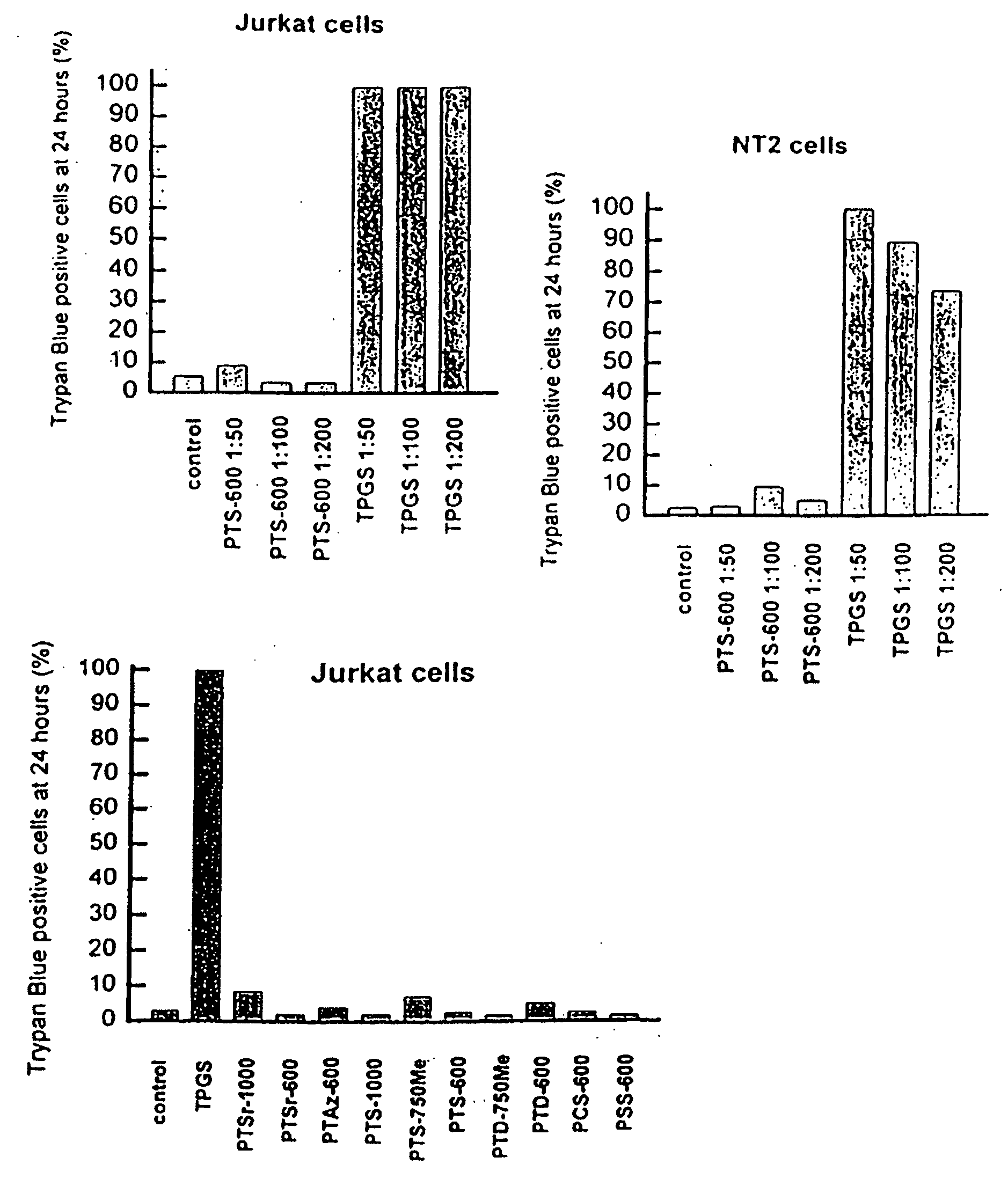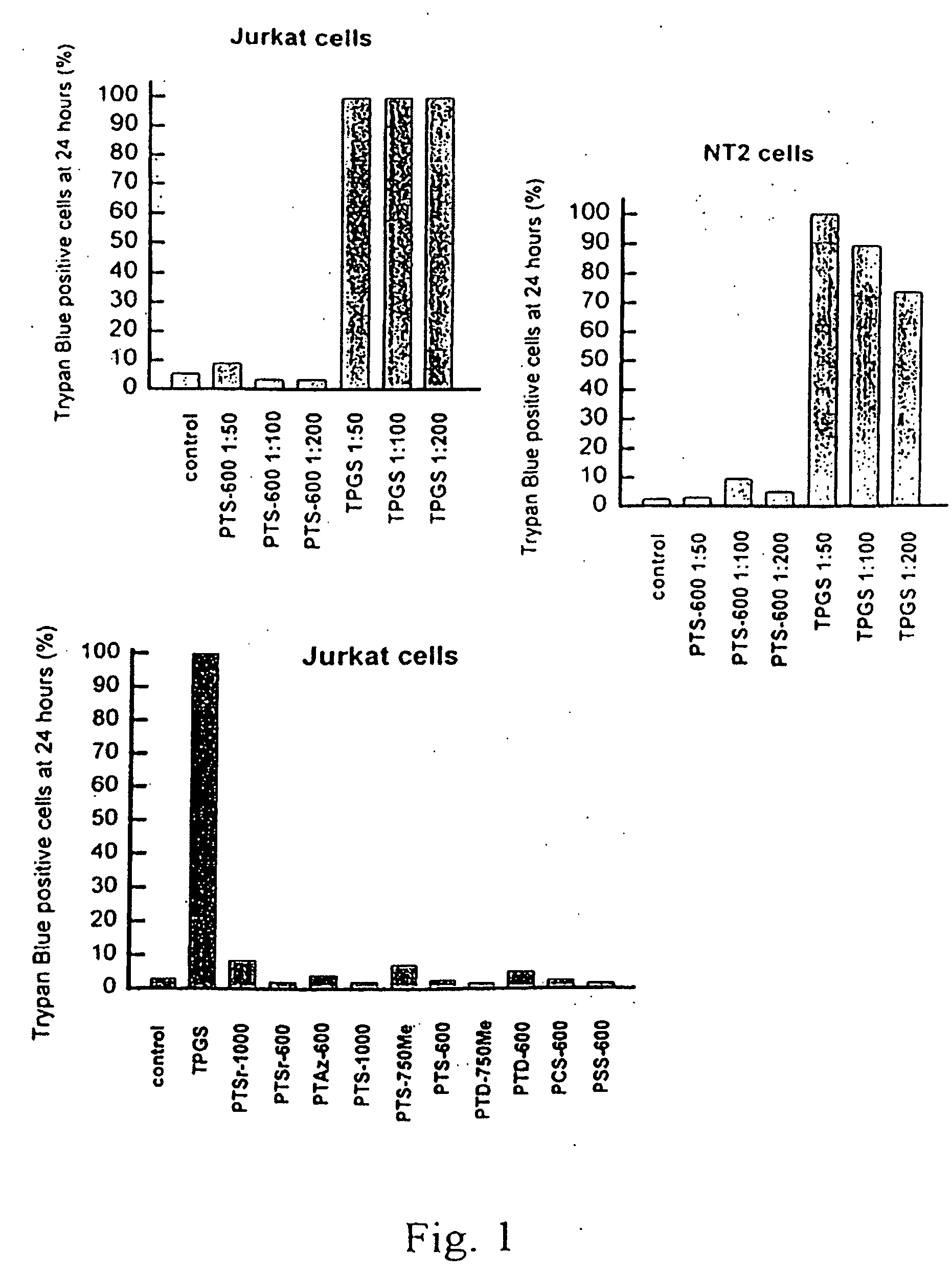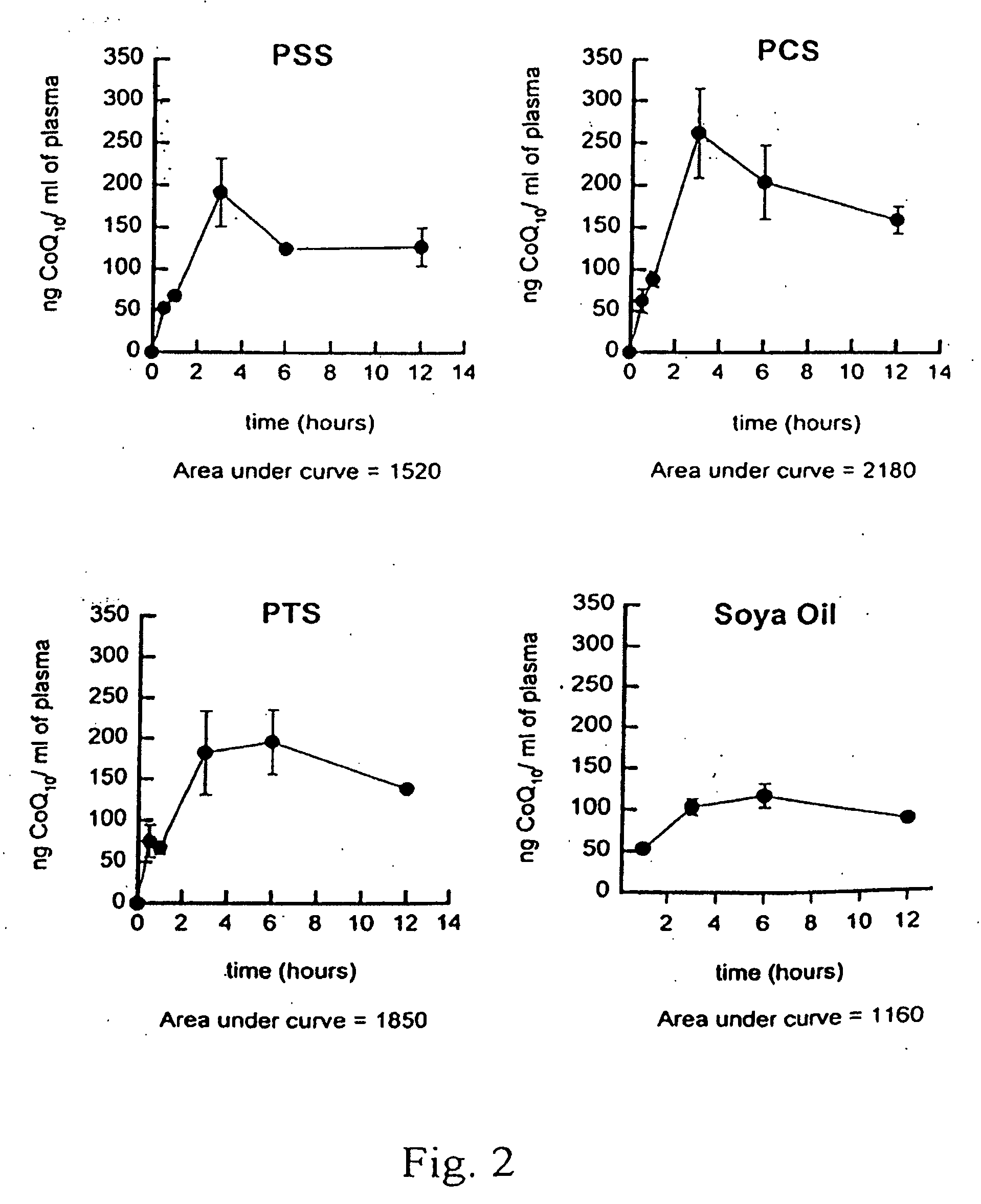Water-soluble compositions of bioactive lipophilic compounds
a technology compositions, which is applied in the field of water-soluble compositions of bioactive lipophilic compounds, can solve the problems of difficult efficient administration of lipophilic compounds to patients, poor bioavailability of lipophilic compounds, and low concentration of lipophilic compounds in the systemic circulation,
- Summary
- Abstract
- Description
- Claims
- Application Information
AI Technical Summary
Benefits of technology
Problems solved by technology
Method used
Image
Examples
example 1
Preparation of Polyoxyethanyl-Sitosteryl Sebacate (PSS-600)
[0089] 0.83 g of b-sitosterol (Sigma Chem. Co., product #S-5753, approximately 60%) was dissolved in 3 ml of dry toluene at 40° C., followed by addition of 1.33 mmole of triethylamine (TEA). 1.33 mmole of sebacoyl chloride dissolved in 2 ml of dry toluene was than added (dropwise, while stirring, and under anhydrous conditions) to the b-sitosterol-TEA solution. The reaction was carried out for 10 min at room temperature, at which time 2 mmole of PEG-600 (polyethylene glycol, Sigma Chem. Co. product # P-3390) and 2.66 mmole of TEA dissolved in 3 ml of dry toluene were added dropwise to the reaction mixture. The reaction was continued with stirring for additional 20 min at room temperature and the reaction mixture was extracted four times with 3 ml each time of saturated solution of NaCl. The toluene was removed under reduced pressure leaving a waxy residue. This product was dissolved in 15 ml of water and water-insoluble mat...
example 2
Preparation of Polyoxyethanyl-α-Tocopheryl Sebacate (PTS-600)
[0090] A solution of 1 mmole of α-tocopherol (Sigma Chem. Co., product # T-3251) and 1.33 mmole of TEA in 3 ml of dry toluene was added (dropwise, under anhydrous conditions, while stirring) to 1.33 mmole of sebacoyl chloride dissolved in 2 ml of dry toluene. The reaction was carried out for 10 min at room temperature, followed by a dropwise addition of 2 mmole of PEG-600 (polyethylene glycol, Sigma, P-3390) and 2.66 mmole of TEA dissolved in 3 ml of toluene. The reaction was continued for additional 20 min at room temperature with constant stirring. The reaction mixture was extracted four times with 3 ml each time of saturated solution of NaCl and toluene evaporated under a reduced pressure. The product was dissolved in 5 ml of water and the residual toluene was further removed by co-evaporation with water under a reduced pressure. The final waxy product (1.15 g) was obtained by lyophilization.
[0091] Other solubilizing ...
example 3
Molecular Characteristic of Solubilizing Agents Obtained by MALDI-TOF Mass Spectrometry
[0093]
TABLE 1Molecular mass of synthesized solubilizing agents.Molecular massSolubilizing agentm / zPSS-6001194.3 ± 44PCS-6001166.1 ± 44PTS-6001209.7 ± 44PTD-6001237.5 ± 44PTS-750Me1355.7 ± 44PTD-750Me1383.7 ± 44PTS-10001605.9 ± 44PTSr-6001181.6 ± 44PTSr-10001578.2 ± 44PTAz-6001195.8 ± 44PTA-6001153.5 ± 44PTSc-6001125.7 ± 44PTS-4001009.7 ± 44
[0094] Example 4 illustrates a method of purification of solubilizing agents.
PUM
| Property | Measurement | Unit |
|---|---|---|
| weight ratio | aaaaa | aaaaa |
| temperatures | aaaaa | aaaaa |
| melting points | aaaaa | aaaaa |
Abstract
Description
Claims
Application Information
 Login to View More
Login to View More - R&D
- Intellectual Property
- Life Sciences
- Materials
- Tech Scout
- Unparalleled Data Quality
- Higher Quality Content
- 60% Fewer Hallucinations
Browse by: Latest US Patents, China's latest patents, Technical Efficacy Thesaurus, Application Domain, Technology Topic, Popular Technical Reports.
© 2025 PatSnap. All rights reserved.Legal|Privacy policy|Modern Slavery Act Transparency Statement|Sitemap|About US| Contact US: help@patsnap.com



